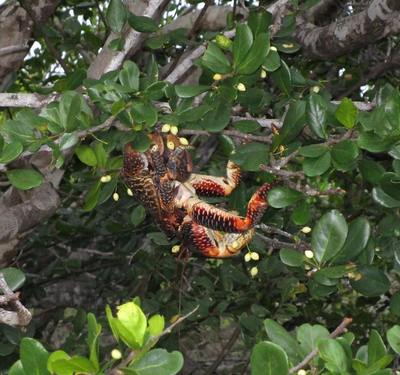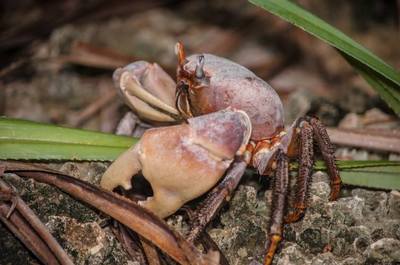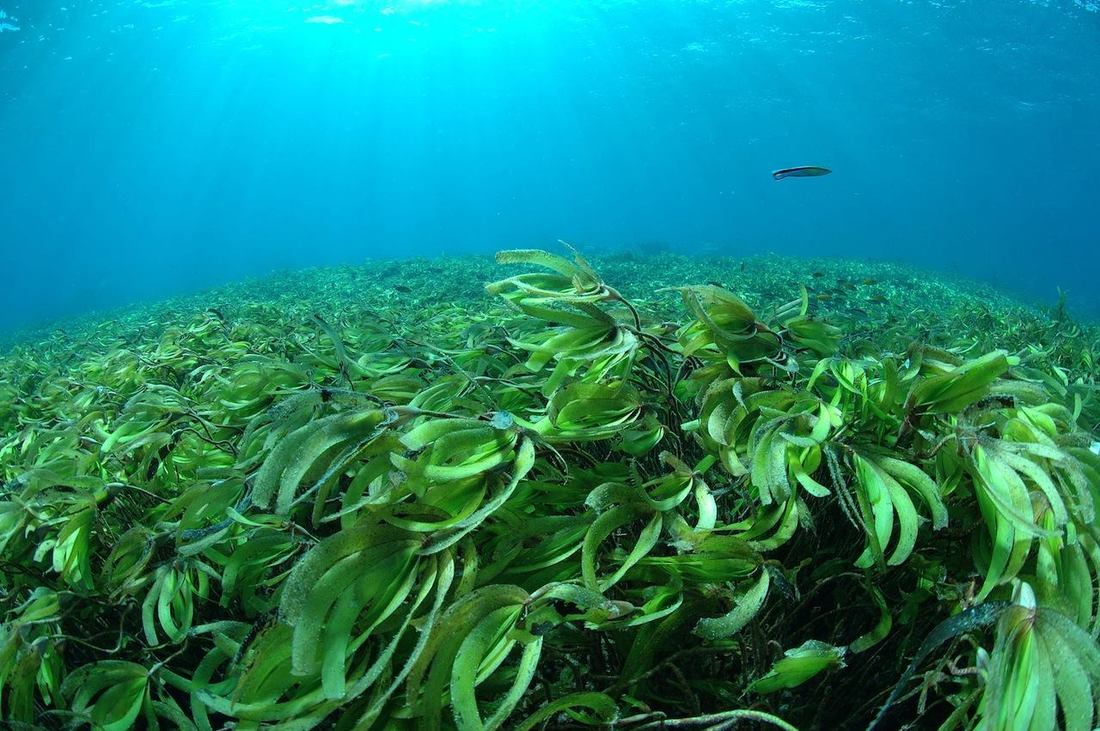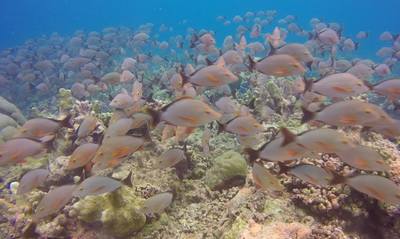|
The atoll is made of reef limestone dating back to the Pleistocene, with irregular striation, holes and prominent on the eastern side and sand dunes on the south coast. The coastline is characterized by undercut cliffs and irregular coral formations, the "champignons". The land surface comprises limestone of about 125,000 years age, which has uplifted many times above the sea level. The surface conditions are crisscrossed and riddled with pot holes and pits, and well-preserved coral and mollusc fossils can be found in the limestone across the atoll, many retaining their original coloration. In the eastern zone of the lagoon, though the surface is continuous, sediment beds are also seen. Photos: SIF
"World Oceans Day is a global day of ocean celebration and collaboration for a better future ... to honor, help protect, and conserve the world's oceans."
#WorldOceanDay #WorldOceansDay Coral reefs are not only extremely diverse marine ecosystems, hosting many species, they are also eye candy for divers and snorkelers. Some major facts about corals, resuming a recent article by Nicole Helgason, PADI Dive Instructor at ScubaDiverLife. Coral reefs are not only extremely diverse marine ecosystems, hosting many species, they are also eye candy for divers and snorkelers.
Some major facts about corals, resuming a recent article by Nicole Helgason, PADI Dive Instructor at ScubaDiverLife. 1. Corals are colonial animals formed by many identical polyps. The individual polyps look like sea anemones, with similar body structure: mouth, stomach and tentacles. During the nights these tentacles are exposed and waiting for the meals to pass by. Some have longer tentacles too, to catch food, or sting other corals that encroach on their territory. 2. There are two general categories, hard corals, where polyps form hard skeletons and soft corals, where jelly-like or rigid, spiny structures hold together soft coral polyps. Another difference is that hard corals are built on a six-fold symmetry, while soft corals are built on an eight-fold symmetry. 3. Hard corals live in tropical, sunny waters, where light penetrates the ocean water to a depth of approximately 230 feet (70 m). Optimal water temperatures for corals are between 73 and 84 F (23 and 29 C), although some can tolerate higher temperatures for short periods. Coral polyps live in symbiotic relationship with photosynthetic marine algae. The coral provides home and protection for the algae and, in exchange, the algae absorb sunlight and produce energy for the polyp. They also give the coral its color. Polyps can also get energy from ingesting plankton and food particles, but being fixed in place, their energy from food consumption is limited. When too much light or high water temperatures stress the polyps, the stressed polyp expels the zooxanthellae algae. If the water temperatures don’t fall quickly enough, the polyp will die without its important symbiont. This is the reason behind the coral bleaching. 4. Corals are regional, and the Australian Institute of Marine Science's website is a great tool in regional coral identification.  Source: STB
Seychelles' 115 islands fall under two distinct groups; Inner Islands and Outer Islands. The 43 Inner Islands - 41 granitic and 2 coralline - cluster mainly within the relatively shallow Seychelles' plateau, 4° south of the equator and roughly 1800 km distant from the east coast of Africa while the 72 low-lying coralline cays, atolls and reef islands of the Outer Islands lie mainly beyond the plateau up to 10° south of the equator. These Outer Islands are divided into five groups: the Amirantes group lying 230km distant from Mahé, the Southern Coral Group, Alphonse Group, Farquhar Group and finally the Aldabra Group, some 1150km from Mahé. Photos: SIF Despite their name, adult coconut crabs mainly feed on fruits, seeds and the pith of fallen trees. They have great sense of smell to find and investigate anything left unattended. After finding it interesting, they may carry it away - this is the reason of their other name "Robber crab."
Coconut crabs live in burrows but for feeding or as escape route they sometimes climb trees. However they live on dry land, females return to the sea to release their eggs into the water. The hatched larvae spends the first 3-4 weeks planktonic drifting around. After settling to the sea floor, they search for a shell to enter and return to land. After a long time, at the age of 5, they reach the sexual maturity. If lucky and "clever" they can live to up to 60 years. Source: wikipedia Photo and info: Said Harryba, ICS island manager
Whitetail ray, also known as Mangrove whip ray are listed as vulnerable on the IUCN red list, and can be found in the shallow water of mangrove areas, estuaries, and sheltered coastal bays of coral reefs. It is best recognized by its partly white tail, dark grey disk color and scattered white spots. Larger numbers of the Whitetail rays has been spotted in groups at ‘Muraille Bon Dieu’ and in a small bay at Passé Hodoule. The largest group encountered was 91 individuals. No surprise here, Seychelles’ largest wetlands are found on Aldabra. Besides its role in providing habitat for terrestrial and marine plants and animals, they are indispensable in keeping the atoll healthy, and act as natural barriers in times of cyclone.
Have you ever tried to count kids on a playground. This has to be similar...
Ok, at least here are some calm ones.... A perfect miniature of its elders, the first tortoise hatchling of the season, sighted at the research station on Picard at Aldabra.
Photo and text: SIF Photographer Thomas Peschak's "NatGeo Wildlife - Photographer of the Year finalist" image, taken at Aldabra
However the Magadagascar nightjar's natural habitats are the moist lowland and montane forests, they are among the happy inhabitants of Aldabra.
It is a landbird, leading a nocturnal lifestyle, and feeding on insects. They almost always roost on the ground, and their excellent camouflage keeps them safe against predators (and tortoise - see our earlier port :) ) and helps them in the "hunt for prey". Photo: SIF FB Hermit crabs can live for more than 30 years in their natural habitats on tropical seashores. They are very social, and need pals, they thrive in large colonies, where they often sleep piled up together. They enjoy climbing, foraging, and exploring, and they even collaborate in teams to find food.
Their gills require high humidity in order to breathe and as their skin doesn’t stretch and grow like ours does, they need very deep, damp sand to burrow under in order to molt. Source: SIF & peta.org |
Archives
October 2017
Categories
All
|
Aldabra Expeditions - Eco and Dive cruise with Silhouette Cruises Ltd
|
LOCATION
|
|






































 RSS Feed
RSS Feed